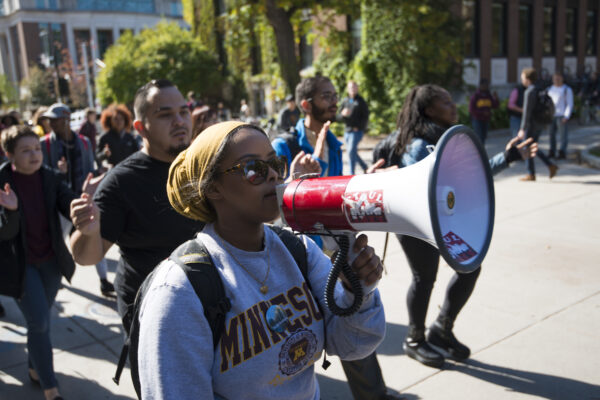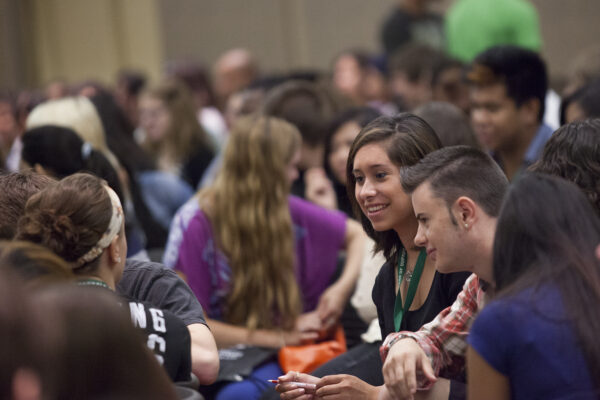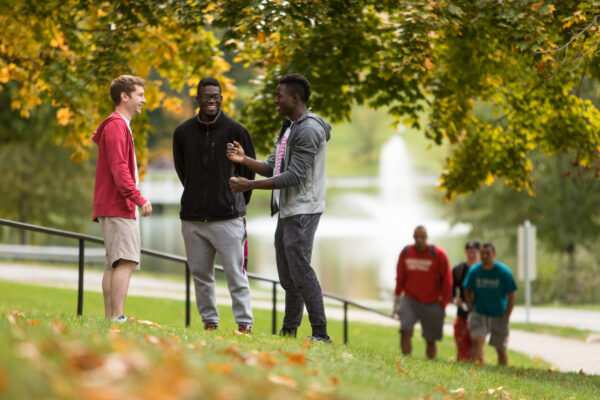By Sanford J. Ungar
This post is part of ACE’s work on free speech and campus inclusion made possible through generous support from the John S. and James L. Knight Foundation.
Free speech is not absolute, and never has been anywhere.
The text of the First Amendment, of course, is simple, sparse, direct, and clear. It enumerates five fundamental freedoms—speech, press, religion, peaceful assembly, and the right to petition for the redress of our grievances. For many of us, speech is primary—the first freedom, without which the others could not exist.
Until about 100 years ago, the speech clause of the First Amendment sat dormant—symbolically important, yet not much discussed. But today, after a century of dramatic Supreme Court jurisprudence on the issue, speech enjoys greater protection in the United States than ever before, a freedom unique in the world.
- Virtually every form of political dissent is acceptable, including symbolic protests running the gamut from wearing black armbands in school to burning the American flag.
- We are free to abstain from patriotic gestures, for religious and other reasons. Military funerals may be picketed, even if doing so distresses grieving families.
- Publication of classified government documents, physical or digital, is increasingly common, although there are still arguments over whether this harms national security.
- Artistic expression once regarded as shocking is now commonplace. Anything goes.
- So-called “hate speech,” long the object of disapproval and regulation by government and civil society, is increasingly recognized as a phenomenon we must live with and try to learn from. In a culture where anyone can say anything about individuals or groups without meeting an elemental standard of proof, definitions of what is offensive, and therefore unacceptable, hate speech are ever harder to agree upon. Higher education speech codes that attempt to restrict or prohibit offensive speech, however well-intentioned, have increasingly come under scrutiny.
Ironically, despite this unprecedented liberty of expression, never have Americans had a harder time figuring out what free speech means, or how to implement it with reasonable, common-sense standards, especially in higher education.

After teaching undergraduate seminars on free speech for years and launching the new Free Speech Project at Georgetown University (DC), I am convinced that the majority of Americans support the concept of free speech—but a distressing number draw a line that excludes speech they do not agree with.
Indeed, for many reasons, including recent political developments, the nation with the freest speech in the world has a growing free speech crisis.
From a federal government that should be protecting and preserving the First Amendment, there is a profusion of new threats. The attorney general of the United States says, almost casually, that he will consider revoking long-standing policy and investigating journalists’ sources. Inevitably, this will chill expression and make it more difficult to report the news—the real news.
The president of the United States, without a trace of irony, uses “fake news” as a label to discredit his media critics and any stories they may publish that reflect badly on his performance. His spokespersons advocate using “alternative facts.” The president expresses shock that the media—“the enemy of the people,” as he calls them—can just report and write and broadcast “whatever they want.” All of this strikes a frighteningly responsive chord among some citizens, who seem to think that tougher libel laws might solve the problem.
Radio stations, even public radio stations, have canceled events after hearing criticism of a speaker’s previous comments and views. Some educational institutions have shut down controversial theater performances that are criticized on grounds of insensitivity.
One place not to turn for a solution to America’s growing free speech crisis is the state legislatures. In a phenomenon that began well before Donald Trump took office, more than half the states have taken up legislation that could negatively impact First Amendment freedoms. Often there are multiple bills in one state, and it is not easy to predict who will be on which side: Republican governors have been known to veto anti-free speech laws, and Democrats to sign them.
Some of the most outrageous bills prescribe mandatory penalties for students who inhibit the speech of others, direct public university administrators not to yield to protests over the invitation of prospective controversial speakers, require expulsion of any student who is convicted of participating in a so-called “violent riot,” make it a crime to wear a mask during a public protest, and levy a five-year prison term for protesters who block traffic and hence interfere with interstate commerce. Obviously, one can expect or hope that many of these laws will be successfully challenged in the courts, but much damage can be done while we wait.
In such a climate, there are many practical difficulties and dilemmas facing colleges and universities.
Of course, it is important to diversify the scope of debate and the ideological range of ideas considered and speakers heard on campus. It is improper simply to shame and mock those who voted for Donald Trump. That much is obvious.
But how do institutions avoid being held hostage by a small number of well-known controversial speakers from the right who often have little to say but wittingly provoke, even invite, disruption?
This is an issue primarily for public institutions, but it will eventually concern everyone. How does one face the threat of self-invited speakers like Richard Spencer, the leader of the alt-right and an avowed white supremacist, who offers up a hate-filled vision of a very different America from the one that most of us are trying to protect? Spencer has mastered the art of finding universities that are obligated under state law to rent him space to speak, and he is often able to find local student or alumni supporters to request and reserve facilities for him to use. He relishes the uproar that ensues. Often this leads to a circumstance in which institutions and governments face the extraordinary cost, which can run into hundreds of thousands of dollars, of protecting their community.
As the situation grows tense and confrontational over a particular event at any size institution, public or private, how can one prevent the hecklers’ veto from being invoked? Is it reasonable to expect minority students to listen respectfully while Spencer degrades them and then ask him calm, analytical questions? Can new ways be found to confront such speakers in a less disruptive manner?
Is there a double standard for dealing with campus and other protests by the mainstream white population, on the one hand, and certain minority groups on the other? The torch-bearing alt-right demonstrators in Charlottesville, Virginia, in August 2017 got away with taunting and pushing the local police force that was trying to maintain order. But as civil rights activist DeRay Mckesson has pointed out, if African American demonstrators who rallied to Ferguson, Missouri, to protest the police shooting of Michael Brown three years earlier had attempted to do the same, they would likely have been arrested and jailed, and quite possibly beaten or killed. Real and palpable discrimination, albeit sometimes unconscious, cannot simply be written off as a character-building experience.
The overarching concern is how to be true to the ideal of free speech, while also building inclusive, accepting communities where everyone has a voice. Can the playing field be leveled without unacceptably restricting speech? Speech and inclusion need not be in opposition to each other, but we must confront as fundamentally undemocratic the effort of any group simply to shut down speech it finds offensive.
The 2017 confrontation in Charlottesville was a watershed event, with free speech at a crossroads, and it could be replicated anywhere at any time. The white supremacist, racist, anti-Semitic alt-right is well organized and may be larger in numbers than we imagine. When its members assert their Second Amendment rights to carry weapons at the same time they are exercising free speech, the mix can be combustible. Every institution will have to be prepared to handle such a crisis.
These issues will not go away anytime soon. Drawing some lines—designing content-neutral time, place, and manner restrictions on speech that may incite violence—is getting harder, and the landscape is full of slippery slopes.
If you have any questions or comments about this blog post, please contact us.


